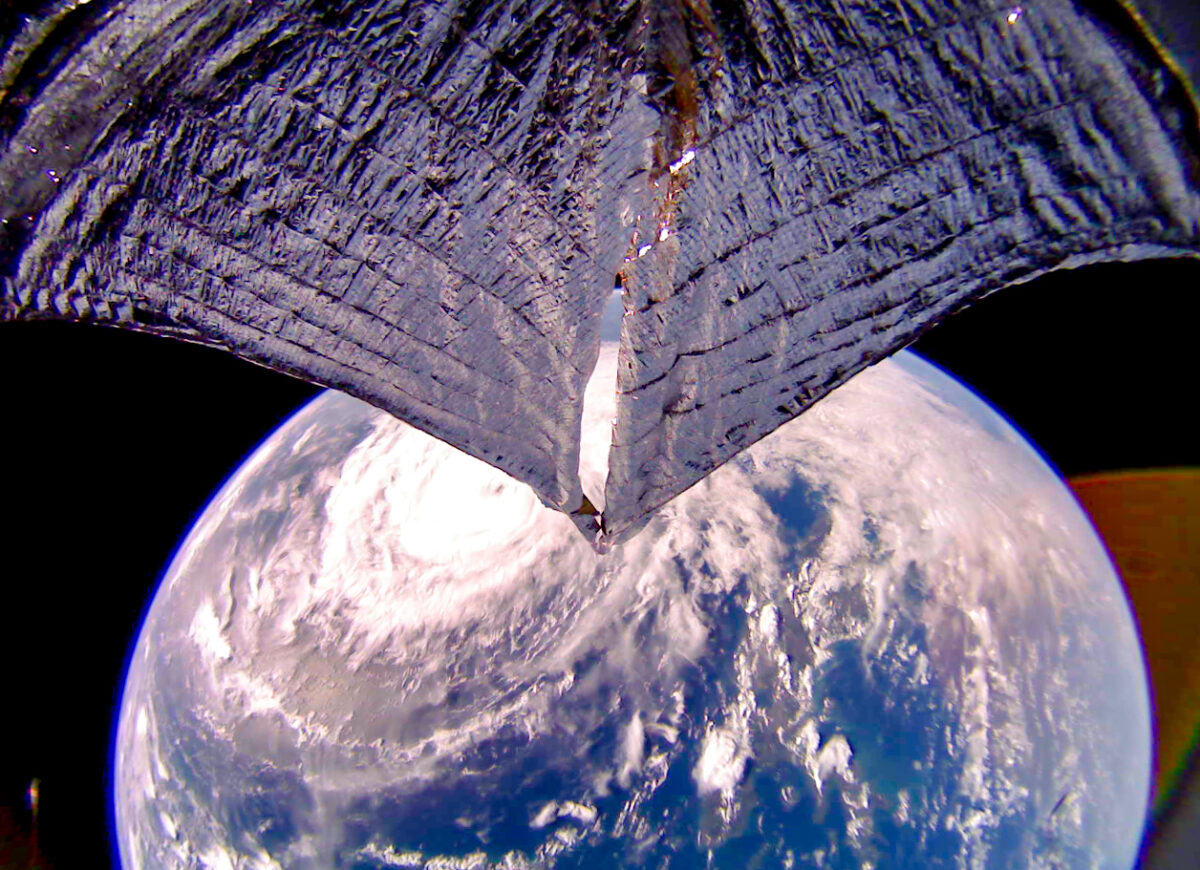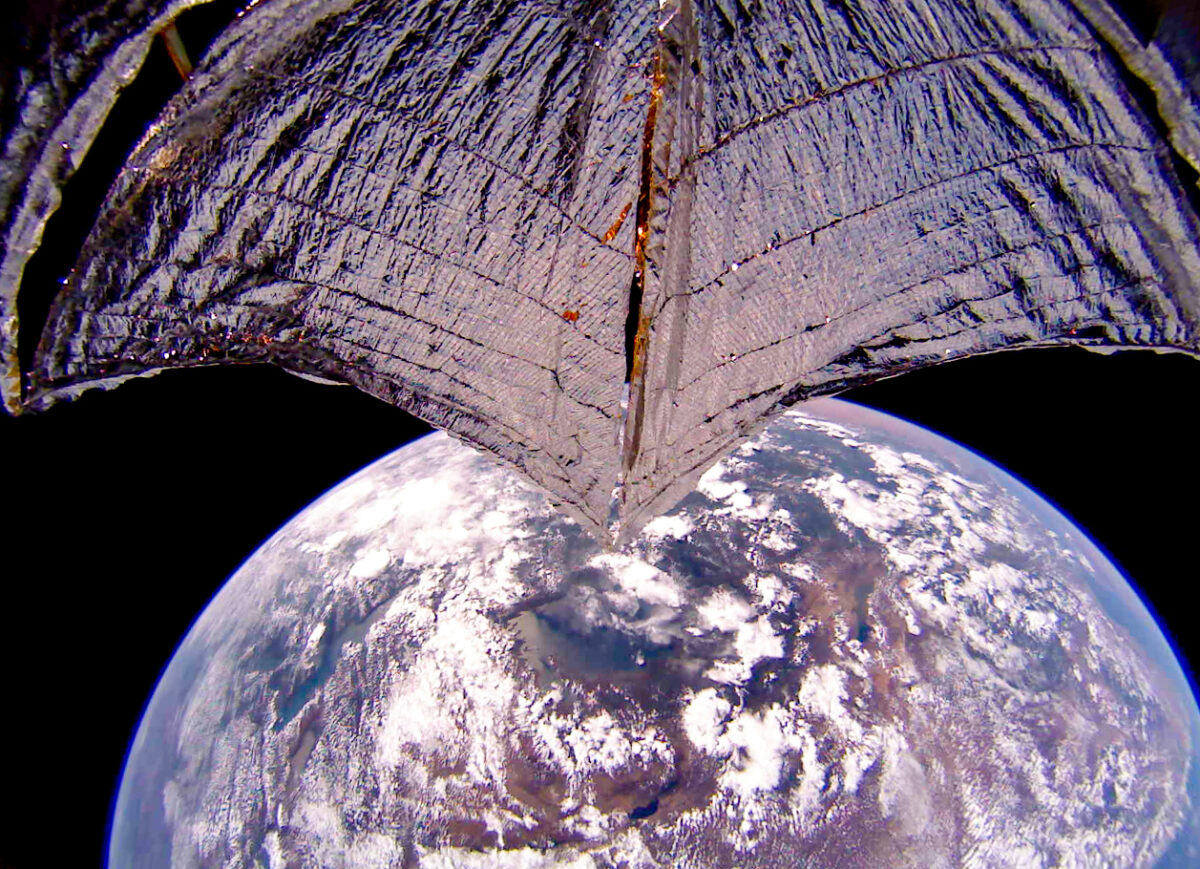Jason Davis • Jan 19, 2021
NASA solar sails build on LightSail 2
A pair of upcoming NASA solar sail missions will take flight by light to new heights, revealing the surface of an asteroid and testing a sail large enough to cover six tennis courts.
NEA Scout is a NASA mission launching to the Moon in August 2022 that will use a solar sail to visit a near-Earth asteroid. NASA has also greenlit Solar Cruiser, a mission launching in 2025 to test a giant sail measuring 1,650 square meters (17,800 square feet) at an artificial orbit between the Earth and Sun.
Solar sail spacecraft use thin, shiny sails to reflect sunlight, giving them a continuous push that equates to unlimited fuel. They can reach and maintain orbits that are difficult or impossible to access with traditional rockets. Solar sails are particularly well-suited to small, low-cost spacecraft that have limited propulsion. Thanks to advances in technology miniaturization, these spacecraft have grown in their capabilities while solar sails have likewise advanced over recent years.
The Planetary Society’s LightSail 2, which has spent more than three years in Earth orbit, is part of a solar sail lineage that makes NEA Scout and Solar Cruiser possible. Based on NASA’s Nanosail-D2 sail spacecraft, LightSail 2 became in 2019 the first spacecraft to demonstrate controlled solar sailing in Earth orbit, a feat that requires continual, quick maneuvers. NASA and The Planetary Society collaborate and exchange data on LightSail 2 and NEA Scout through a Space Act Agreement.
“People often ask us whether there will be a LightSail 3, and in many ways that’s what NEA Scout and Solar Cruiser are,” said Bruce Betts, Planetary Society chief scientist and the LightSail program manager. “These missions are logical next steps that further advance solar sail technology. We’re honored to contribute by sharing what we’ve learned through our ongoing LightSail 2 mission and are thrilled that NASA is moving forward with these exciting solar sail missions.”

The Missions
NEA Scout is expected to launch in August 2022 with a fleet of other small satellites aboard Artemis 1, the inaugural test flight of NASA’s Space Launch System rocket. SLS will blast the Orion crew vehicle on a mission to lunar orbit and back.
On the way to the Moon, the SLS upper stage will deploy a fleet of CubeSats that includes NEA Scout. NEA Scout will deploy its 86-square-meter solar sail and use it to leave lunar orbit for a near-Earth asteroid flyby. The current target asteroid is 2020 GE.
NEA Scout demonstrates a low-cost method of asteroid reconnaissance for human and robotic missions and will add to our scientific knowledge of small worlds. Recent asteroid sample return missions like NASA’s OSIRIS-REx and Japan’s Hayabusa2 both encountered unexpectedly rocky terrain at their asteroids, highlighting the value of scouting planetary bodies in advance.
In 2025 Solar Cruiser will take solar sailing to a new level by testing a sail an order of magnitude larger than any flown before. Solar Cruiser will hitch a ride to space with NASA’s Interstellar Mapping and Acceleration Probe, IMAP. IMAP will study how the constant flow of charged particles coming from our Sun known as the solar wind interacts with cosmic radiation coming from the rest of the universe. This interaction creates a bubble that surrounds and protects our solar system.
Solar Cruiser will coast with IMAP and another small satellite towards Lagrange point 1, or L1, a location where Earth and the Sun’s gravity balance to create a place for spacecraft to orbit. L1 lies along the Earth-Sun line about 1.5 million kilometers (0.9 million miles) from Earth. Solar Cruiser will fly beyond L1 and use a solar sail to make its own artificial orbit closer to the Sun, but still on a straight line between the Sun and Earth as Earth revolves around the Sun. Only a solar sail can provide the forces necessary to maintain such an otherwise unstable orbit since doing so requires constant fuel.
The demonstration will show how solar sail missions beyond L1 could be used for solar science or to provide additional warning time of solar storms that damage satellites and disrupt power grids on Earth. A similar mission could also hover high above the Sun’s poles, continuously monitoring them to deepen our understanding of solar physics.
Les Johnson, the principal investigator for NEA Scout and Solar Cruiser at NASA’s Marshall Space Flight Center, credits LightSail for bringing solar sailing into the mainstream.
“I think the technical work that The Planetary Society did, as well as the outreach and awareness and education component, has been really critical toward making this capability more real in the minds of decision-makers and scientists and people interested in sailing,” he said during a recent Planetary Radio interview.

LightSail 2 Mission Continues
The LightSail 2 team continues working to optimize sailing, continually collect and downlink engineering data, analyze performance, and take images. These images are for engineering assessment of the sail and booms and to provide inspirational images of our Earth with the sail in the foreground.
Though it has operated beyond initial projections, atmospheric drag is bringing LightSail 2 down. The mission is expected to end sometime in the next few months — but its legacy will continue.
Learn more:
Editor's Note: This article was updated in August 2022 with new information on NEA Scout, LightSail 2, and the Artemis I mission.
The Time is Now.
As a Planetary Defender, you’re part of our mission to decrease the risk of Earth being hit by an asteroid or comet.
Donate Today

 Explore Worlds
Explore Worlds Find Life
Find Life Defend Earth
Defend Earth

